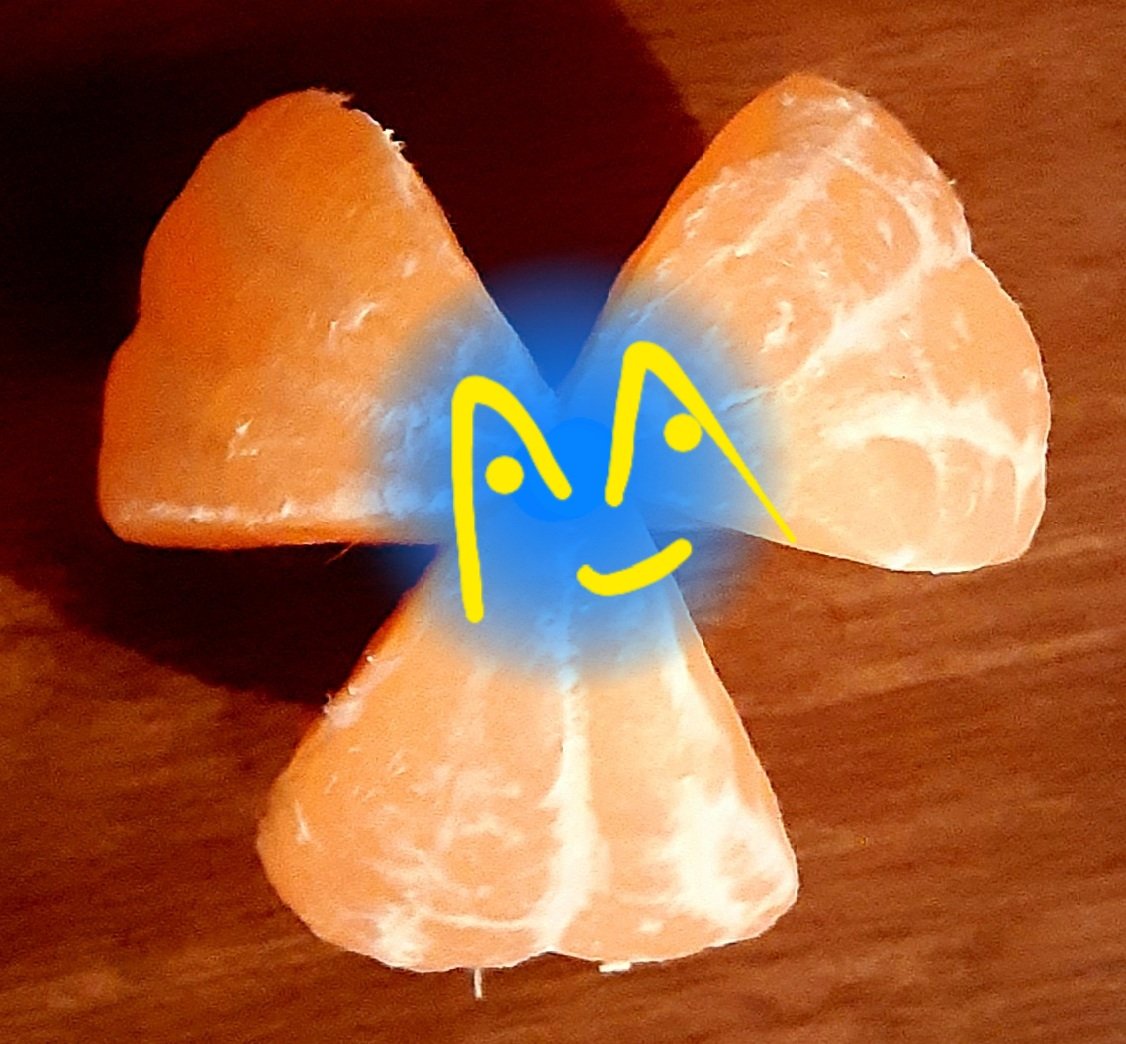Just put two π ohm resistors in series duh
Whats wrong with your 3!
Ugh, 3 factorial is most definitely not equal to π. It’s something more like, idk, 9? Honestly I don’t even know how I got here; I majored in Latin and barely past
Barely passed your English classes as well I assume. /s
They barely passed me.
My high school English teacher still has night terrors about me starting sentences with conjunctions. And that was the least of their problems.
Edit: kind of unrelated, but that song about conjunctions is now stuck in my head. 🎶Conjunction junction, what’s your function? 🎶
Have you been chillin with the phunkadelic crew sober?
Math is a liquid. Or a language.
In case anyone wondering factorial is
n! = n * n-1 * n-2 * … * 3 * 2 * 1
Erm. In what world do you live that the precedent in your expression is right?
In all languages and countries I know multiplication binds more strongly than addition. So what you wrote would be
n^2 - n - 2n - 3n…
I wrote it correctly. It is the definition of a factorial.
No, correctly it would be n * (n-1) * (n-2) * … * 3 * 2* 1
Or the actual recursive definition
1! = 1
n! = (n-1)! * n
Well…
g1/2 = e = 3 = pi
e = π = σ = ε = µ = Avogadro’s Number = k = g = G = α = i = j = 3
(at least that’s how they all look when viewed from ∞)
I was not ready for this truth bomb
Shouldn’t have i in there, or j if you’re using that to represent the imaginary number. The complex plane is separate.
Let epsilon be substantially greater than zero…
The list of things I shouldn’t do, but do regardless, stretches past infinity.
Imaginary numbers are best understood as symbolizing rotation. If we’re imagining a number line here, “looking back from infinity” - at a scale where Grahams number looks like the mass of an atom expressed in kilograms, i would not be in that infinite set of numbers, it would be a point above that line and creating a perpendicular plane to it.
I hate the term “imaginary” because it’s misleading. Most high school algebra teachers don’t understand what they are either, so people learn about these things called “imaginary” numbers, never learn any applications with them, hopefully graph them at best, and then move on understanding nothing new about math.
Students also tend to get really confused about it as possibly a variable, (it’s really annoying with in second year algebra courses, where e and logs also show up). We say “ah yeah, if you get a negative sign, just pull it out as an i and don’t worry about it. or just say no real solutions.”
3 = 10^(1/2)
π = 1
3! = 10Isn’t 3 factorial equal to 6??
couldnt you technically fine tune a potentiometer to be this resistance if you were precise enough?
Mathematically yes. Practically, right now? No.
So you need a resistor of this value for your widget.
For that many places of precision you’re looking at a potentiometer with a 10 nano-ohm precision.
I am not aware of any commercially available resistor that can do that but you could create one using microelectronic structures used for ICs and derive a 10 nano-ohm resistor by design and then chain enough of these elements into a resistor network or potentiometer to create the super precise resistance value you want.
Cool, congratulations.
Now how are you going to use this 10 nano-ohm resistor? What voltage will you be applying across it? What current do you expect it to handle? And therefore what are your power requirements? What are your tolerances, how much can the true value deviate from the designed ideal?
Because power generates heat through losses, and that will affect the resistance value so how tightly do you need to manage the power dissipation?
How will you connect to this resistor to other circuit components? Because a super precise resistor on it’s own is nothing but an over-engineered heating element.
If you tried connecting other surface mount devices (SMDs) from the E24 or even E96 series to this super precise resistor then the several orders of magnitude wider tolerances of these other components alone will swallow any of the precision from your super accurate resistor.
So now your entire circuit has to be made to the same precision else all of your design work has been wasted.
Speaking of which, now your heat management solution now needs to be super precise as well and before you know it you’ve built the world’s most accurate widget that probably took billions of dollars/euros/schmeckles and collaboration from the worlds leading engineers and scientists that probably cost more time and money than the Large Hadron Collider.
Yes
True. Would the effort have any beneficial application? Aside from being bad ass.
No
Therefore we should do it anyway.
There should be a badassness scale for decisions like these.
9 significant figures? good luck!
You’ll make do with three and you’ll like it!
The tolerance would be greater than the difference anyway.
Don’t sneeze right next to it with that kind of precision.
Sure, except the resistance will constantly change with time, temperature and other environmental variables.
I had a potentiometer on a circuit board that adjusted a timer, but I found that the timer varied in timing. I ended up replacing with a few resistors and it corrected the variations.
I’m a physicist. If you are an engineer that sounds like a “you” problem.
Not using the correct resistors does cause a U problem every once in a while.
Or an I problem, depending on your perspective
Sounds like a 6 ohm resistor solution.
They’re 5.6 or 6.8 ohms usually
OK, the solution is “how accurate will make the physicist and accountants both only kinda mad”
I’m not an engineer
This is also a “you” problem. Fix that at your earliest convenience.
Too true, and my problem is about to be your problem and the cycle continues comrade.
Numbers like that are why I quit majoring in mechanical engineering. Physics took the beauty of math and made it ugly.
You knew something was wrong in calculus when you got a fucked up coefficient that wasn’t a nice number.
I actually really like physics, and it’s 100% because I’m fucked up and evil
Respect. Physics is way up there in terms of hard science nerd cred.

the philosopher floating on a cloud: So how do you guys really know what’s real?
deleted by creator
The trick is to round everything. Pi? Basically 3.
I’ve heard a story (so like 4th hand at this point) where an astrophysicist was talking about galaxy rotations or something. “And for this model, we can simplify pi to 10.”
My thermodynamics professor made so approximations in his derivations that all of his equations had an “O” term to represent the inaccuracy. Every time he made another approximation he’d say “and, of course, the O sucks up the error”.
After calculus though, they just expect you to cope with fucked up coefficients. In Diff Eq, sometimes you do just get something like 3/111 cos (6/111 x). It gets harder to come up with examples that work out with nice integers.
Physics can also have some really beautiful math, look at Lissajous figures. Once you understand the connections between e, the imaginary plane, and sine/cosine, you get some profound understandings about how electric and magnetic fields work.
That level of precision in a resistor would literally be thrown off if you breathed on it. If you actually needed that, then you need to build an extremely controlled environment around it. Even then, the heat from the electricity itself would throw it off. Maybe in a liquid nitrogen bath?
Its funny the first thing I thought of was, at what temperature.
First, assume a spherical resistor in a vacuum, that can also dissipate heat with 100% efficiency.
Now that we’re in physics land, anything is possible.
Only if it isn’t applied physics.
A big aspect of good design is being able to solve an issue as succinctly as possible, with as wide an operating range as possible. Lower tolerance requirements = better.
If you need that level of precision, you might want to reconsider your career in circuit design.
You can’t tell me that there isn’t a good reason that 0.001% resistors exist. Otherwise why sell them?
4 Sig figs vs 9 Sig figs is a big gap. If you need your resistors in a circuit to be precise to 9 Sig figs, seek a new career.
It is almost always possible to take a system and make it more precise by using more precise parts (just gotta make sure you know what part you are changing to improve what tolerance). You do get diminishing returns with that, but it beats inventing a new system if the tolerances you need are just alittle ways away.
i miss old school radioshack. i did not know what all those bins of tiny electronic hobby parts were for, but I desperately wanted to learn. I did eventually but you have to get all your stuff from some shady oligarch.
Yeah we’re living in the ruins of the old America already and have been for like 25 years.
It’s dirty they just use the same business names they did in the 20th century. While making smoke and mirrors versions of the old products.
i did not know what all those bins of tiny electronic hobby parts were for, but I desperately wanted to learn.
From what I understand, prior to the personal computer boom of the 1980’s, HAM radio was kind of a big deal with nerds. The parts were there for all manner of electronics tinkering, but a big mainstay was building and modifying radios. Yeah, you had people tinkering with computers in the 1970’s too, but it was more niche (until it wasn’t).
I’m fond of the gentle expert dudes who are so old they heard about the mad Max signal intrusion that day
Ah yes, the old “send the new guy out to buy an isotropic antenna and an electron trap” on their first day
Can we do a fraction of an electron boss? The economy is kind of rough. Guy on the phone says he can do a time share too.
Sorry, we need two electrons with identical spin and orbitals. Better check the place across town.
maybe there should be?!
The only application I can think of off the top of my head that would require that precision is a R2R DAC.
Just sort through a bin until you find one.
Rheostat, my dudes
Trimmable precision resistor.
Even better
I just came up with the absolute dumb simple solution :D
“just stick a pot on the board bro, it’ll stay at 1.49284762340598 ohms for 9 or 10 nanoseconds after leaving the factory.”
Until finding out about finite measurement resolution
Quantum Ampere Standard
https://www.nist.gov/noac/technology/current-and-voltage/quantum-ampere-standard
.
there also been research for defining a quantum volt and quantumly stable resistorshttps://www.nist.gov/noac/technology/current-and-voltage
Quantum-based measurements for voltage and current are moving toward greater miniaturizationP.S. :
https://en.m.wikipedia.org/wiki/Quantum_Hall_effect
Quantum Hall effect →
Applications →
Electrical resistance standards :(…) Later, the 2019 revision of the SI fixed exact values of h and e, resulting in an exact
RK = h/e2 = 25812.80745… Ω.(this is precise to at least 10 significant digits)
deleted by creator
Wait until they connect something to a battery.
Nerd
It’s been a while, but are ginger bread houses really that complex now?















